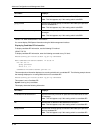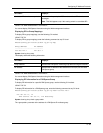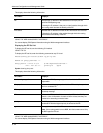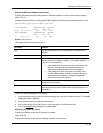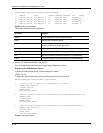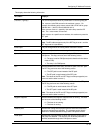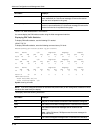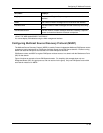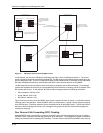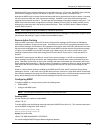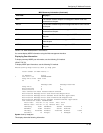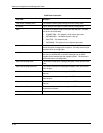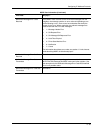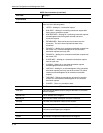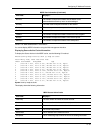
Advanced Configuration and Management Guide
9 - 30
Figure 9.4 PIM Sparse domains joined by MSDP routers
In this example, the source for PIM Sparse multicast group 232.0.1.95 is in PIM Sparse domain 1. The source
sends a packet for the group to its directly attached DR. The DR sends a Group Advertisement message for the
group to the domain’s RP. RP is configured for MSDP, which enables the RP to exchange source information
with other PIM Sparse domains by communicating with RPs in other domains that are running MSDP.
The RP sends the source information to each of its peers by sending a Source Active message. The message
contains the IP address of the source, the group address to which the source is sending, and the IP address of the
RP interface with its peer. In this example, the Source Active message contains the following information:
• Source address: 206.251.14.22
• Group address: 232.1.0.95
• RP address: 206.251.17.41
Figure 9.4 shows only one peer for the MSDP router (which is also the RP here) in domain 1, so the Source Active
message goes to only that peer. When an MSDP router has multiple peers, it sends a Source Active message to
each of those peers. h peer sends the Source Advertisement to its other MSDP peers. The RP that receives
the Source Active message also sends a Join message for the group if the RP that received the message has
receivers for the group.
Peer Reverse Path Forwarding (RPF) Flooding
When the MSDP router (also the RP) in domain 2 receives the Source Active message from its peer in domain 1,
the MSDP router in domain 2 forwards the message to all its other peers. The propagation process is sometimes
called “peer Reverse Path Forwarding (RPF) flooding”. This term refers to the fact that the MSDP router uses its
Rendezvous Point (RP)
PIM Sparse Domain 3
Rendezvous Point (RP)
Receiver for Group
232.1.0.95
PIM Sparse Domain 4
Rendezvous Point (RP)
PIM Sparse Domain 2
Source for Group
232.1.0.95
PIM Sparse Domain 1
Designated Router (DR)
206.251.14.22
Source Advertisement message
1. DR receives traffic from source
and registers source with RP.
2. RP sends SA message
through MSDP to its MSDP
peers in other PIM Sparse
domains.
4. When SA caching is enabled,
the RP immediately responds to
Join messages from receivers.
Otherwise, the RP and er
must wait for the next SA message
for the group.
3. RP that receives the SA
floods the SA to all its MSDP
peers, except the one that sent
the SA.
Rendezvous Point (RP)
206.251.17.41
The
Eac
receiv



